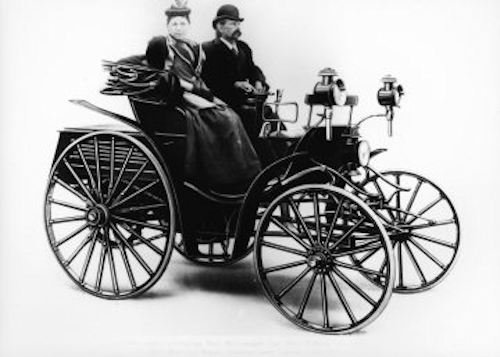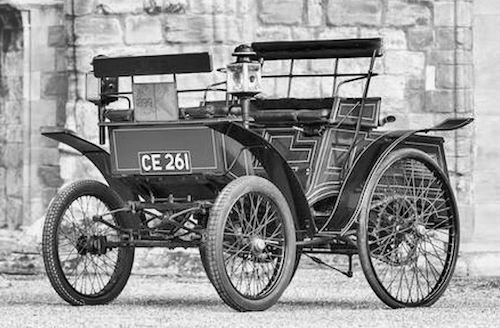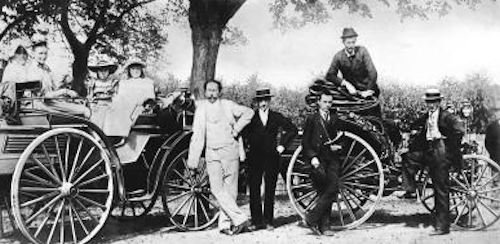Benz Victoria and Vis-à-Vis
1893 to 1900

Benz Victoria motor car
The Benz Viktoria was a car made by the Benz motor company from 1893 to 1900.
It sold in large numbers across Germany when it was first sold.Up to the beginning of the eighteen-nineties.
One of the reasons for the poor commercial success of Benz's first vehicle was that it was a tricycle. So from 1891 Benz embarked on
solving the front wheel steering problem. Two years later he did so by swiveling the wheels independently on king pins, and he was granted
a patent. The new car was called Victoria symbolizing victory over the steering problem.
With the design of an effective axle-pivot steering (DRP 73151 of 28th Februar 1893) this path was paved for four-wheeled vehicles.
In 1893 Benz the model "Victoria" available was also a four-seated version with face-to-face seat benches,called the model "Vis-à-Vis".

1899 Benz Vis a Vis
The vehicle's excellent properties were tested not only in city traffic but also on longer distances. In 1894, the year Count Albert de Dion organized the very first Paris- Rouen car racer a textile industrialist, Baron Theodor Liebig entered for a long-distance race in Liberec, now in Czechoslovakia, at the wheel of
his Victoria. He and his friend Stransky chose the route from Liberec via Mannheim to Rheims and back On the first day they reached the
small town of Waldheim, having averaged 13.5km/h (8.4mph). The town was some 195 km (121 mi) from Liberec, and the car reached a
top speed of 22km/h (14mph), The next stop-over was at Eisenberg and Eisenach. The fourth day was the most strenuous, a non-stop
drive to Mannheim, the Victoria's home town, The drive took 26 hours, Karl Benz personally welcomed the intrepid Baron Liebig and organized
a ball in his honour. The following day the drive continued to Gondorf with a longer stop-over. By now the automobile had covered 1000 km
(620 mi). The pace from Condorf to Rheims and back to Liberec was less hectic. Liebig recorded his experience in a diary, ending up with
the following: 'One of the things we appreciate highly is that Benz's car has made us aware of all the beautiful places that exist in the
German countryside'.

Baron Theodor Liebig and Karl Benz
The Benz Victoria, in which Baron Liebig covered the 2500 km (1550 mi) route, was fitted with a horizontal single-cylinder engine.
With bore and stroke dimensions of 130><150mm it had a capacity of 2000 cc and developed 3kW (4hp) at 400 rpm. This four-stroke
water-cooled engine was mounted at the rear, and it drove the rear axle by means of flat belts and two chains. The hand-brake controlled the
back wheels, which were fitted with solid rubber tyres.
The vehicle weighed 650kg (1431b) and it was 2.9m (9ft 6in) long.
The Victoria was Benz's favourite car. It was made in different versions, such as Vis-å-vis or Phaeton, until 1899.
Both variations recieved displacement and performance changes ,that were continuously enlarged and improved up to the end of production in 1900.
